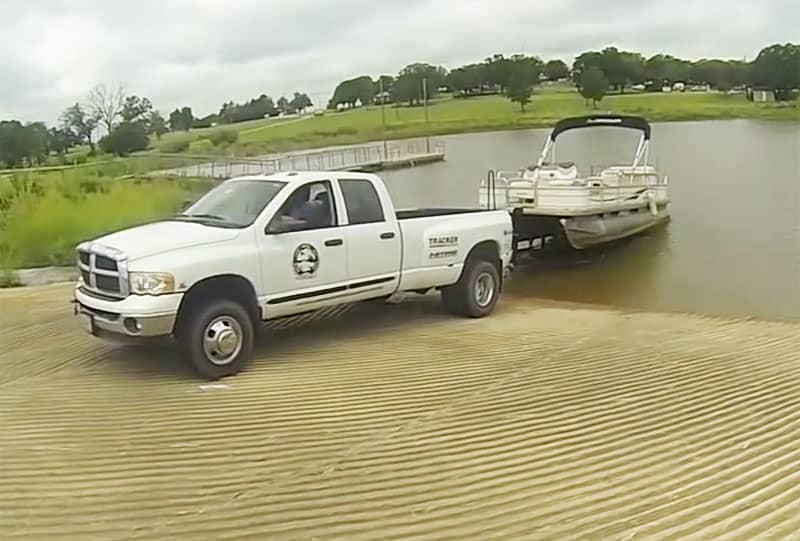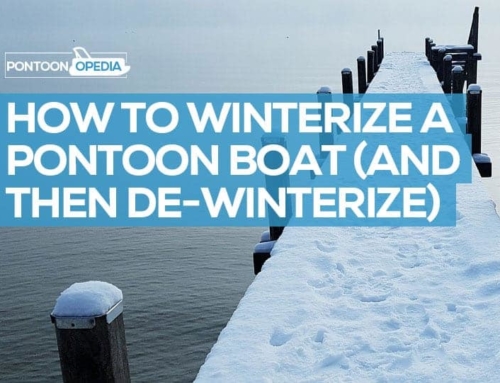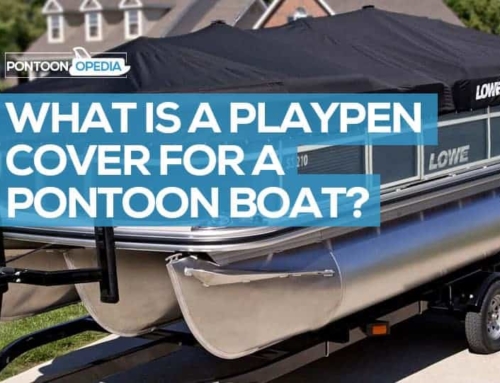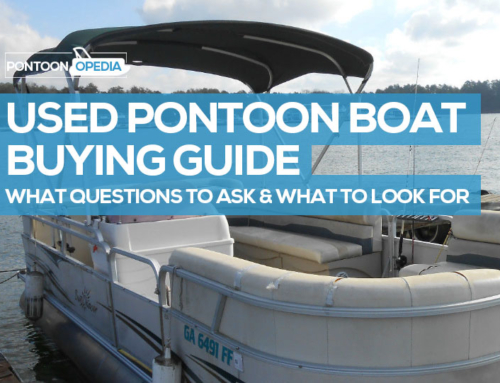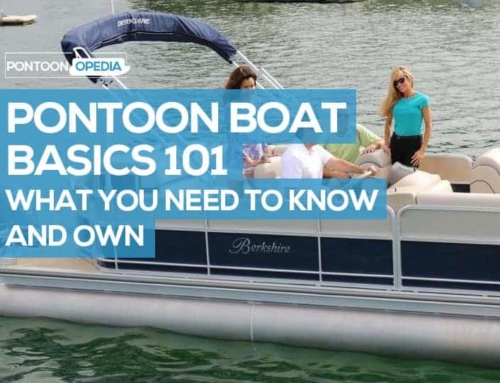Launching a pontoon boat is a little bit different to how you would launch a single hull boat. Due to the design, they won’t sink into the water like a traditional boat will and can start to very quickly float away. Because of that, they need a unique approach.
In this guide I am going to tell you the best way to launch a pontoon boat from a ramp and with your trailer, so that you get it right every single time.
You are most likely going to be launching your pontoon boat from a ramp with four distinct areas. These include a staging area where you prepare the boat for entering the water, then the actual ramp itself, plus the parking lot and another staging area where you can tie the boat down after leaving the water.
Even if where you are launching from doesn’t have these four distinct areas, it’s worth keeping them in mind, as well as the etiquette you should stick to at the marina. For example, you won’t be very popular if you are blocking the ramp whilst you untie or load up.
Handy Hint: You will need two people to do this pontoon boat launch procedure. If you are going to be launching by yourself, click here to see how you can do a solo launch.
Step 1: Preparing for Launch
Before you even think about backing your trailer and boat onto the launch ramp, get prepared first. These are the steps you should take every single time.
- Make sure that the drain plug is plugged in
- Rig the fenders if you have any
- Remove the tie down straps plus a transom saver if equipped
- Unplug your trailer’s lights
- Load the boat with your supplies from your vehicle such as food, water sports gear, and fishing gear
- Attach the stern and bow lines
Now that’s done, one last thing: double-check that the drain plug is in. I’ve seen this happen before and it makes for quite an embarrassing launch if it isn’t.
Step 2: Backing Up Your Trailer into Position
Now your pontoon boat is prepared for launch you can move from the staging area to the actual ramp. If you want to do this with the least chance of having to make any corrections, then there’s a good tactic for how you back up the trailer.
All you do is make sure that your trailer goes in the opposite direction to your vehicle’s front wheels. In other words, when backing-up place your hands at the bottom of your steering wheel. If you do this, you will soon see that the pontoon trailer goes in the same direction as you are moving your hands. It works every time.
Get your vehicle and pontoon trailer lined up as best as you can with slight adjustments using the method outlined above. Once you’re in position you will be ready to start reversing back down the ramp.
Step 3: Back the Trailer Down the Ramp
You can now start backing down the ramp. Move slowly until the tires of your trailer are almost in contact with the water – then stop before the boat is fully into the water and make sure you are lined up, so you can make any adjustments if needed.
If happy with your position, continue to move backwards as you want to have the boat far enough into the water so that the propeller is completely covered, but not far enough that is wants to float off the trailer.
Step 4: Start the Engine (2nd Person)
With the boat trailer winch strap still connected, the second person will need to jump out of the vehicle, climb into the boat, and start the engine. With the engine running they should walk to the back of the boat and visually check that water is shooting out of the lower unit, just above the propeller. This indicates that the water pump is functioning properly.
Now that you are sure the engine is operating properly you can go ahead and disconnect the trailer winch strap located at the front of your pontoon boat. At this point you will have the driver continue backing down the ramp so the trailer goes into the water. Do this until the boat floats off the trailer.
Handy Hint: The depth you back the trailer into the water depends on how steep the launch ramp is – they will always be slightly different depending on where you are.
Step 5: Drive the Pontoon to the Dock
The driver of the boat can now reverse back and then drive the boat back to the dock to pick up the vehicle driver and passengers. The vehicle driver should be simultaneously driving back up the ramp to park the vehicle and trailer safely.
Be Aware of Hazards & Launch Safely
If you have anyone in the water at any point during the launch, perhaps if they are using a tow line, then make sure that your line handler is aware of how slippery boat ramps can be. I’ve never seen a boat launching ramp that doesn’t have a thin layer of slime underneath where the water starts. It can be lethal to step on.
As the driver, you need to be at 100% concentration at all times and be ready to put the brakes on and stop if someone slips over.
It’s not just people on foot that can get into trouble. A slippery launch can also play havoc with your vehicle’s grip leading to a slide. Try to keep your tires on dry concrete at all times.
Also, don’t let assistant go into the water with nothing on their feet to try and pull or push your pontoon boat off the trailer. Under the water there are various hazards including slippery rocks, possibly broken glass, and sharp debris that can really hurt. If they are wading in, make sure they have rubber-soled shoes on.
If you do need to exit your vehicle to help with the physical launch, shift your vehicle into park, and pull the parking brake on. I’d also recommend placing chocks under the wheels for extra stability so have some handy in the vehicle that you can grab quickly. You can buy some for not much money on Amazon.com – click here for parking chocks.
Pontoon Boat Launch Ramp Etiquette
Unfortunately, not every boat owner is patient. They can launch in minutes because they have been doing it for years.
What that means is that you might get that person behind you who just doesn’t have the character to wait patiently whist you launch your pontoon. And there’s nothing worse than feeling flustered as the queue behind you starts to back up with other boat owners watching your every move.
That’s why I always recommend that you practice backing up and reversing your trailer and boat at home, or perhaps in a parking lot. It will save you a lot of stress.
What will also save you some stress is understanding the etiquette of the marina launch ramp. Other boat owners will expect you to be ready to launch as soon as you are in position.
That means don’t get into position and then start loading the boat up. You should be prepared to launch your pontoon as soon as you reverse back up – that’s what the staging area or car lot is for.
Retrieving Your Pontoon Boat
Getting your pontoon boat back onto the trailer is much harder than launching it, especially on a windy day. Unless you have a specially designed pontoon trailer, driving the boat onto the rollers can end up being a very bad decision.
What you can do most of the time is center the pontoon on the trailer by using bow lines, stern lines, and a boat hook. Have your line handler walk down the trailer on the catwalk so they can attach the winch cable to the bow eye on your pontoon.
You can then start winching the boat up onto the trailer. Once in place drive to the tie-down area and do your final checks and securing. This includes:
- Securing all the tie-downs
- Connect and plug-in your trailer lights, and check to see they are working
- Pull out the drain plug
- Take any items out of the boat to place in vehicle, or secure in the boat
You’re now all set to go home.
Arriving Home
Once your home and safe, find a flat area where you can un-couple your trailer. Again, chocks can come in handy. Put them in front of and behind at least one of your trailer wheels, more if you can – and this must be done before un-coupling and disconnecting.
Now adjust the crank-down front wheel height to let any remaining water in the pontoon boat drain out. You can then put the trailer-light pigtail in your vehicle to keep it safe.
Always cover your pontoon boat to keep it in good condition. You can find out what the best pontoon covers are, plus read some tips on how to make sure that you keep pests including mice out of your boat when stored for the winter.
Rules for Trailering Pontoon Boats
And finally, if you aren’t familiar with the law regarding your pontoon boat and a trailer, then you need to brush up on that knowledge ASAP. There will be laws that apply from state to state, and you can check how they differ on this rules and regulations guide.
There is one rule though is standard no matter where you are; you must clearly display a license plate on your trailer.
Other things to consider are:
- You don’t need a permit for trailers less than 10,000 pounds in weight
- You don’t need a permit for trailers less than 102 inches in width
- If towing in excess of 10,000 pounds you will need a commercial driver’s license
- Most US states require you have trailer brakes if carrying more than 1,500 pounds
- Many US states do not let you use surge brakes
When driving to and from the lake, river, or marina, plan your route beforehand. There could be some aspects to your route which will have weight, height, and width limits. It’s also illegal to transport volatile fuels such as propane gas through tunnels.
Handy Hint: Read my 11 essential tips for trailering a pontoon to get it out of the water.

